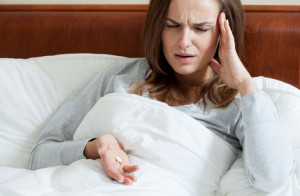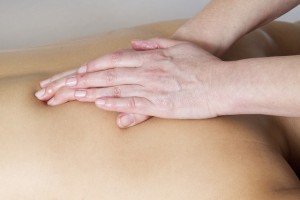Contributor: Crystal Karges, MS, RDN, IBCLC, Special Projects Coordinator at Eating Disorder Hope/Addiction Hope
 Chronic pain is a reality that countless individuals struggle with across the world. According to the U.S. Department of Health and Human Services, chronic pain impacts more Americans than heart disease, diabetes, cancer combined1.
Chronic pain is a reality that countless individuals struggle with across the world. According to the U.S. Department of Health and Human Services, chronic pain impacts more Americans than heart disease, diabetes, cancer combined1.
Pain is also the most common cause of long-term disability, and the experience of pain in itself can occur alongside other disease states and conditions1. If you have a loved one that has struggled with pain, either acutely or chronically, you have likely observed the debilitating impact that pain has on a person’s daily life. Activities that would appear to be seemingly simple can become complicated, and daily tasks can suddenly become much more challenging and complicated.
Pain is something that should be dealt with approximately and carefully. While medication management can be a helpful way for an individual to deal with pain, the results may lead to more harmful consequences, such as physical side effects or even dependence on medication. Physical dependence on medication can lead to prescription misuse, abuse, or even an addiction.
Alternative Forms of Relief
Many alternative forms of relief are available for those who struggle with pain on a daily basis. Exploring alternative options may be a way to effectively manage pain without dealing with the unwanted side effects. One form of a relieving pain alternative is Acupressure.
Acupressure is an ancient form of therapy developed in Chinese medicine that uses precise finger placement and pressure over specific points along the body2. Acupressure, which uses a combination of acupuncture and massage techniques, focuses on targeting channels in the body, or “acupoints” that lie along particular meridians.
It is hypothesized that major meridians, or channels in the body intersect with specific organs, including the brain, and working in these specific body regions can help restore balance to the body.
How to Apply Pressure
 Practitioners who specialize in Acupressure use certain techniques to apply pressure to the meridians of the body, include fingers, elbows, feet or devices that apply pressure to the body in a specific way. Acupressure sessions may also involve stretching, massage or the incorporation of other methods that promote healing and balance. Acupressure stems from the belief that energy in the body can be channeled to regulate and balance both positive and negative.
Practitioners who specialize in Acupressure use certain techniques to apply pressure to the meridians of the body, include fingers, elbows, feet or devices that apply pressure to the body in a specific way. Acupressure sessions may also involve stretching, massage or the incorporation of other methods that promote healing and balance. Acupressure stems from the belief that energy in the body can be channeled to regulate and balance both positive and negative.
In Western societies, Acupressure is typically thought of as a technique to alleviate tension, improve circulation, and stimulate endorphins. The combination of these results may work together to naturally relieve pain in the body without the use of medications or prescriptions.
Talking to Your Doctor
If you are experiencing chronic pain and have either tried conventional forms of treatment or are looking for a natural alternative for pain relief, you may consider trying Acupressure. Talk to you doctor about whether or not this form of alternative health care may be appropriate and safe for you.
Generally, there are no side effects or risks to Acupressure, and these sessions are typically completed in about an hour’s time. If you are suffering with diseases such as heart disease, cancer, arthritis, or some other chronic condition, be sure to discuss with your doctor first is Acupressure is appropriate for you.
Finding a Certified Practitioner
 Lastly, be sure to find a certified practitioner who is qualified and licensed to provide Acupressure therapy. You can often read reviews online ahead of time or search for a practitioners credentials to ensure that they are fully qualified to provide the treatment that you are looking for.
Lastly, be sure to find a certified practitioner who is qualified and licensed to provide Acupressure therapy. You can often read reviews online ahead of time or search for a practitioners credentials to ensure that they are fully qualified to provide the treatment that you are looking for.
Chronic and acute pains are difficult facets to deal with on a daily basis. While medication can be a helpful aspect of treatment, it is also important to know that there are other natural pain relieving options that do not involve medications. Work with your doctor to explore and discuss what treatment options may be most appropriate for you and the condition you are dealing with.
Community Discussion – Share your thoughts here!
Have you utilized Acupressure as a form of treatment for managing pain? How did this help you deal with pain on a daily basis?
References:
- “Pain Management”, http://report.nih.gov/nihfactsheets/ViewFactSheet.aspx?csid=57
- “Wellness Therapies: Acupressure”, Dr Weil, M.D., http://www.drweil.com/drw/u/ART03230/Acupressure.html Accessed 21 May 2015
Last Updated & Reviewed By: Jacquelyn Ekern, MS, LPC on June 26th, 2015
Published on AddictionHope.com
